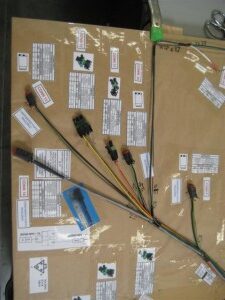The importance of cabling systems in industrial organizations has grown over the years. In 2015, a market research report by IBISWorld stated that there are over 300 wire and cable manufacturers across America. These companies employ over 27,000 people, and earn an industry revenue of $416bn. Needless to say, the number of cabling systems being used across the country is an extremely large number. However, with many wire and cabling systems in use, there are bound to be a variety of health and safety issues. In this post, we will take a look at certain cable environmental concerns, and solutions to the same.
Primary Cable Environmental Problems
Generally, there are two primary environmental concerns when looking at industrial wire and cable. These points are discussed below in detail.
- Fire Hazards: Most wire and cable systems are stored in plenum spaces in buildings. These are areas that allow for air circulation to support heaters and air conditioners. Unfortunately, these become potential fire hazards, as the plastic material used as shielding jackets can burn easily, and release toxic gases. As the cables are in the plenum spaces, they can also help spread fire and gases throughout the building.
- Manufacturing Materials: In this point, we shall discuss three important materials – copper, lead, and Poly Vinyl Chloride (PVC).
- Copper: Although a popular material used to manufacture cables, copper is also regarded as a great environmental hazard. The mining and processing of copper results in emissions of nearly 130 gigajoules of energy. It also leads to environmental degradation, as nearly 80% of the rock surface around copper deposits is regarded as waste.
- PVC: Poly vinyl chloride is a common material used for jacketing and shielding cables. PVC is a plastic derived from fuel. Due to this, the production, use, and disposal of PVC cables can release toxic gases and chemicals. PVC manufacturing processes also produce explosive greenhouse gases like chlorine and vinyl chloride monomer.
- Lead: In cable manufacturing, lead accounts for 2-8% of the jacket structure. Being a toxic element, the chaffing and deterioration of cables can lead to the additive getting loose and accumulating on ceilings, floors, and walls of buildings.
Preventive Measures
The fact is, these materials are intrinsic to the creation of the industrial cables. However, certain preventive measures have been taken by the US Government to try and reduce the problems associated with these concerns.
- Codes and Standards: The National Fire Protection Association (NFPA) created certain standards, which limited the use of hazardous materials in cable manufacturing processes. These include:
- UL2424
- NFPA 90A (2002)
- NFPA 5000 Building Code (2003)
- National Electrical Code or NEC (2005)
- NFPA 13 Sprinkler Systems (1999, and revised in 2002)
Limited combustible cable networks are also produced by cable manufacturers. These cables comprise FEP (Fluorinated Ethylene Propylene) as the primary manufacturing material for the cable as well as the jacket. FEP is known for creating low smoke in case of a fire. Manufacturers are also focusing on creating cables without lead as the primary material.
- Abandoned Cable Disposal: The NEC published many articles in 2002 and 2005 on the removal and disposal of abandoned cables. Generally, cable removal is performed during building renovation. Used cables are sent to organizations that specialize in cable handling, recycling, and disposal. The cables are stripped of copper cladding and PVC jackets.
With the above mentioned measures, there can be a possibility to reduce the number of environmental concerns associated with industrial wires and cables.

